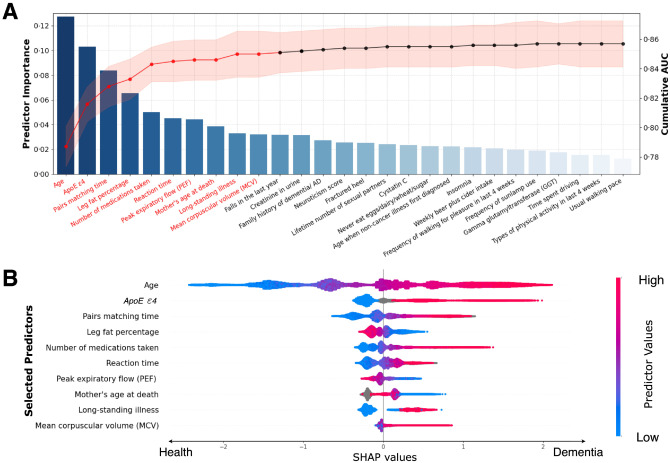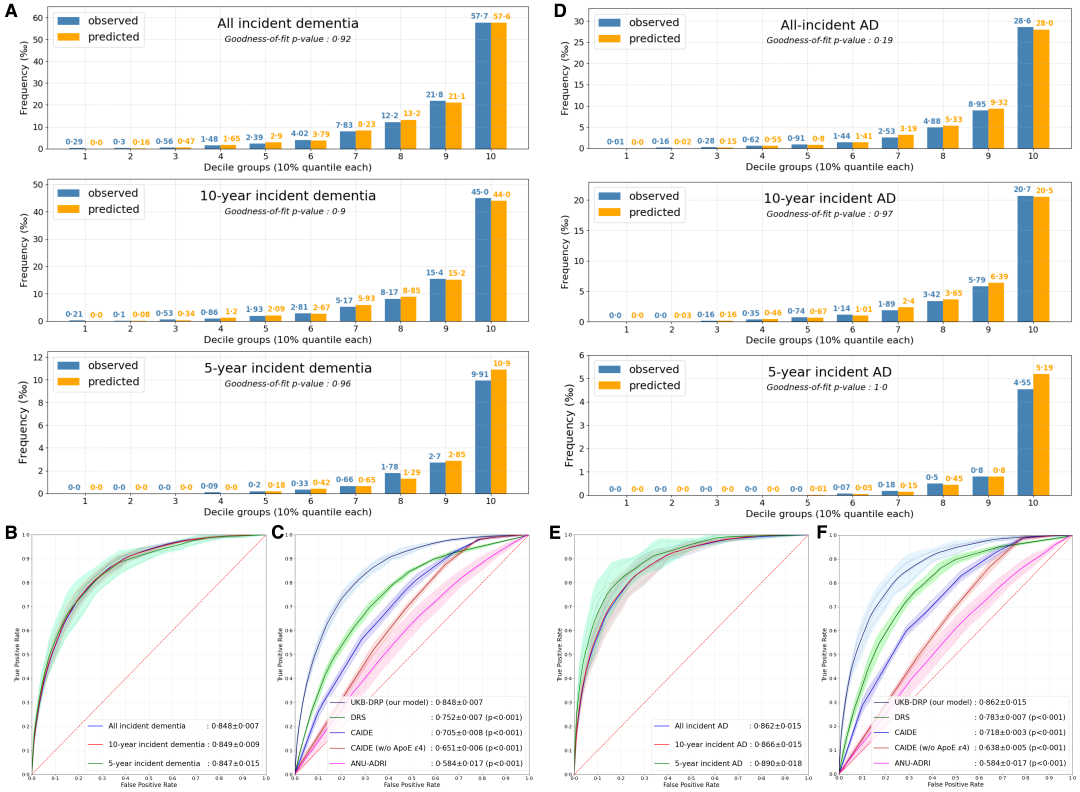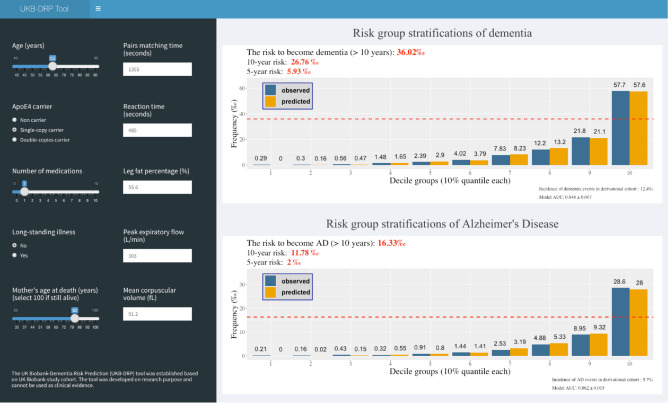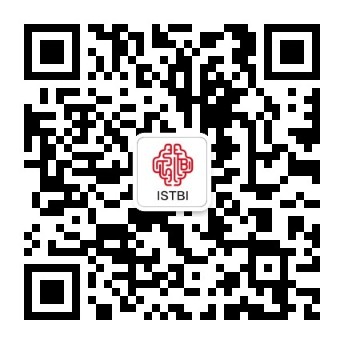Recently, research teams lead by Prof. Jianfeng Feng at ISTBI and Prof. Jintai Yu at Huashan Hospital developed an ML-based UKB-DRP model with solid predictive power for incident dementia and AD within five, ten, and much longer years, which can be used to identify individuals at high risk of dementia and AD in the general population. The study was published in eClinicalMedicine on 23 September 2022.
In this longitudinal population-based cohort of the UK Biobank (UKB), 425,159 non-demented participants aged 40-69 years were enrolled from 22 recruitment centers across the UK between March 1, 2006 and October 31, 2010. During a median follow-up time of 11.9 years, 5,287 participants developed dementia. The researchers implemented a data-driven strategy to identify predictors from 366 candidate variables covering a comprehensive range of cognitive, biological, behavioral, genetic and environmental factors and determined top ten predictors for model development.
A novel UKB dementia risk prediction (UKB-DRP) model comprising ten predictors including age, ApoE ε4, pairs matching time, leg fat percentage, number of medications taken, reaction time, peak expiratory flow, mother's age at death, long-standing illness, and mean corpuscular volume was established.

△Predictor selection and SHAP visualisation of modelling on all incident dementia population
The UKB-DRP model showed superior prognostic accuracy compared with previously published CAIDE, DRS, and ANU-ADRI. The model achieved AUCs of around 0.85 in predicting dementia incidence within five, ten, and much longer years. The model's performance was better in AD predictions with all AUCs more than 0.86. In addition, the model was well-calibrated with predicted probabilities perfectly plotted against the observed proportions of events.

△Performance of the UKB-DRP and existing prediction scales.
Compared with the models established based on variables obtained from elaborate neuropsychological tests, expensive whole genome sequencing (WGS), invasive lumbar puncture, or brain positron emission tomography (PET) imaging, the UKB-DRP model is solely based on the easily accessible predictors which can be collected from quick questionnaires, physical measures, and simple blood tests. Therefore, this prediction model can be widely applied to medical institutions at different levels.
The web application was made accessible online at https://jiayou0907.shinyapps.io/UKB-DRP-Tool/.

△ A stylized representation of the UKB-DRP tool
Full Article:
You J, Zhang YR, Wang HF, Yang M, Feng JF, Yu JT, Cheng W. Development of a novel dementia risk prediction model in the general population: a large longitudinal population-based machine-learning study. eClinicalMedicine. 2002. doi:10.1016/j.eclinm.2022.101665

